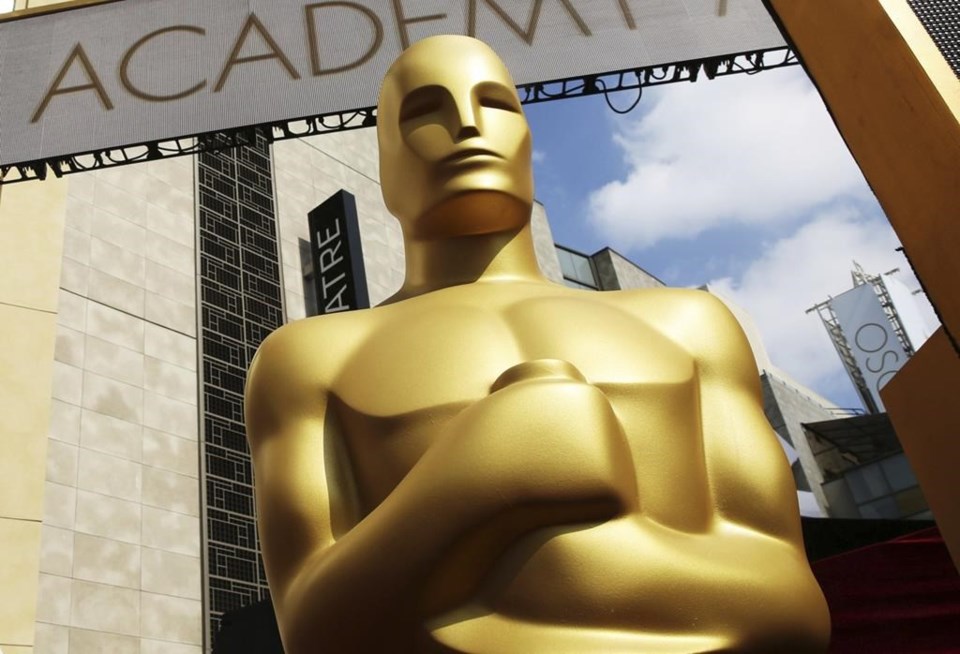The theatrical requirements for movies vying for the Oscars top prize are getting a little tougher.
Starting with the 97th in 2025, best picture hopefuls will have to spend more time in theaters to qualify for film's top prize. The changes, announced by the of Motion Picture Arts and Sciences this week, come after three years of .
On top of the current one week “qualifying run” in one of six U.S cities — New York, Los Angeles, Chicago, Atlanta, San Francisco or Miami — best picture contenders would now must also now play for an additional seven days in 10 of the top 50 U.S. markets. Additionally, there's several other new rules about when the movies must play in theaters.
“It is our hope that this expanded theatrical footprint will increase the visibility of films worldwide and encourage audiences to experience our art form in a theatrical setting,” Academy CEO Bill Kramer and Academy President Janet Yang said in a statement.
It’s part gesture to theaters still struggling from the pandemic, partly for audiences in markets outside of New York and Los Angeles who don’t always get theatrical access to best picture contenders, and partly a statement to deep pocketed streaming services that theaters remain paramount for Hollywood’s top prize.
The film academy’s leaders also say the decision was born out of many conversations with industry partners and that they feel that this “evolution benefits film artists and movie lovers alike.”
But some in the industry questioned what it really changes, who it benefits and who it might hurt.
Michael O’Leary, the President and CEO of the National Association of Theater Owners, applauded the “important initiative." In a statement, O'Leary said it "affirms that theatrical exhibition is the keystone of the industry.”
For traditional studios, from the big ones like Warner Bros., Universal and Disney, to the smaller players, like A24 and Neon, behind recent best picture winners “ ” and “Parasite,” it likely affects very little.
For streaming services, it could be a case-by-case adjustment depending on the company but not a hurdle. Amazon is already planning to release every year, as they've already done with Ben Affleck's “Air.” on movies that will land in cinemas before streaming, including Ridley Scott's “Napoleon.”
Netflix has had a bigger theatrical footprint lately too. Not only do they control two U.S. theaters — New York's Paris Theater and Los Angeles' American Cinematheque — but they’ve also historically given theatrical runs to their awards hopefuls. All of Netflix’s nominees since have met the requirement. Its , “All Quiet on the Western Front,” played in hundreds of theaters.
The new rule may weed out the possibility of a grassroots campaign on behalf of a very small film, however. Independent theaters and those willing to play independent films have become rarer and the competition is fierce for those screens in the major markets. Some of the bigger indie stalwarts are even scheduling major studio films, leaving fewer times and screens available for true independents.
Much like the diversity requirements that went into effect this year, few could think of recent best picture players that wouldn’t have met this threshold. Apple’s best picture winner “CODA” played in about 40 theaters. Even non-traditional Oscar “underdogs” like “ ” and “ ” had substantial theatrical runs.
“It’s important to consider that qualifying is merely a first step in a long process that involves robust and costly campaigning,” said Dan Berger, the president of the independent film company Oscilloscope. “I think it’s fair to say that nearly any film that doesn’t meet these parameters never stood a chance in a best picture race anyway.”
Berger added: “Hopefully the result of this isn’t more robust and more costly campaigning that only serves to further divide merit based results from campaign based results.”
There are a lot of unknowns about the specifics of the expansion, including whether there will be minimum of showtimes and screens. Could companies simply rent out eight screens that will play to minimal or no crowds in densely populated areas that are relatively cheap and that are also not historically great for indie films? It’ll check the box, but will it help theaters, the films or audiences? And will it lead to an even greater year-end bottleneck of releases?
Questions also remain about how it will affect the eligibility of animated films and documentaries, which wouldn’t have to meet these requirements to qualify in their individual categories but now might have to adopt a different strategy to be in contention for best picture.
Others are more hopeful and know that the academy’s board of governors meet often to as the landscape continues to change.
“It’s about time that the academy made a move to recommit to theatrical. The Oscars were inching closer and closer to becoming the Emmys,” said one top awards strategist and academy member who requested anonymity to speak candidly about the changes. “Could they have gone further? Of course. But it’s a good faith step in the right direction.”
___
Follow AP Film Writer Lindsey Bahr on Twitter: .
Lindsey Bahr, The Associated Press




